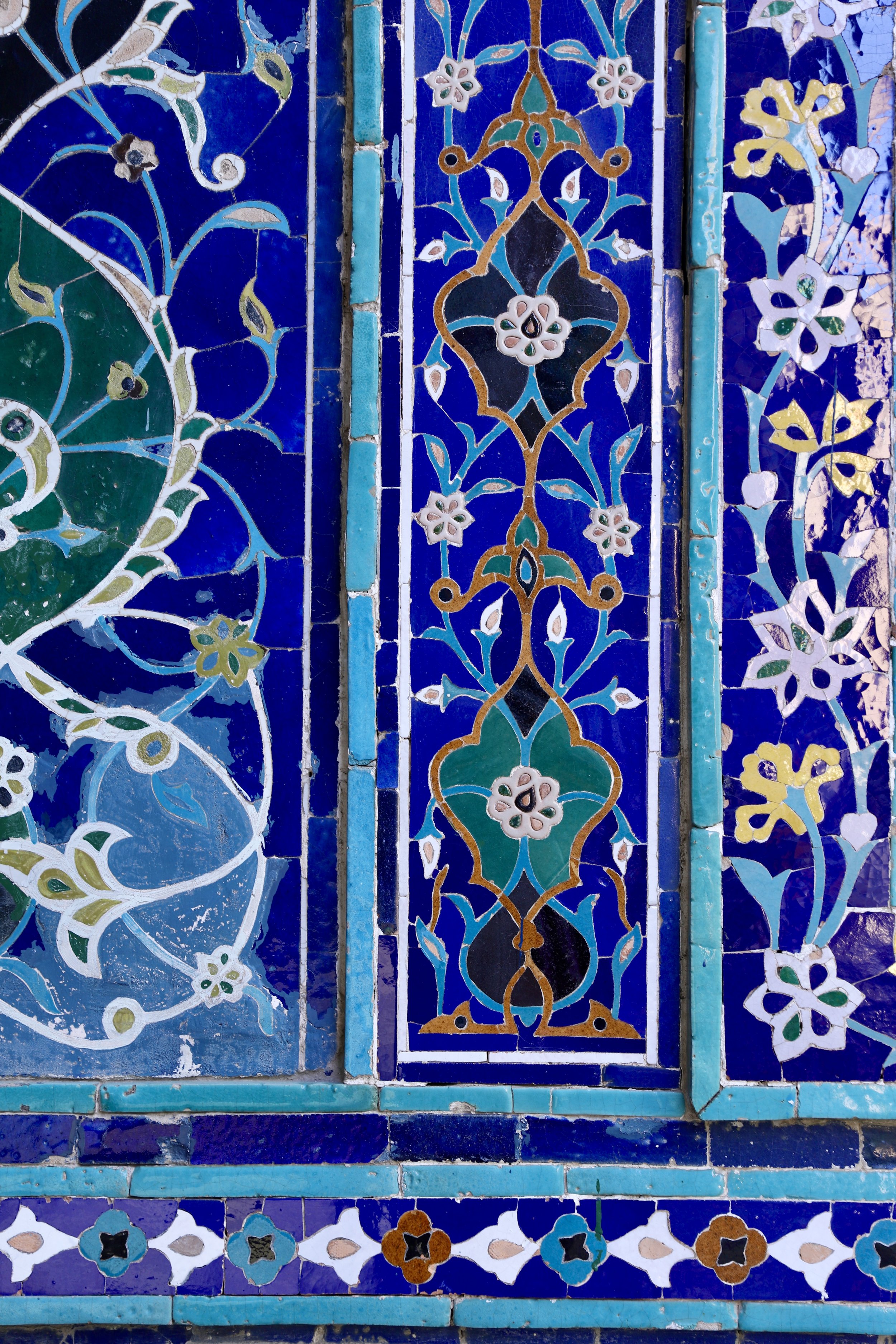Symphony of Beauty:
What do the ornaments tell us?
Ornaments not only decorate various objects but are also an important symbol of the history and culture of Uzbekistan. Their uniqueness often attracts the human eye and overwhelms it with admiration. Let us consider the meaning of some Uzbek patterns in the example of architectural monuments.
Text by Diyora Gulyamova
Photos by Oyjon Khayrullaeva
Ornaments play a crucial role in the cultural identity of the Uzbek people. Since ancient times, girls and women have tried to create embroidered items to decorate their homes and bring cosiness.
Ornaments often decorate traditional clothing (zardozi - the art of golden sewing), textiles (Suzani - decorative textiles with hand embroidery), jewellery, ceramics, house interiors and architecture.
Traditional techniques for creating Uzbek ornaments include embroidery, painting, wood and stone carving, and metal hammering. Materials for ornaments include silk, cotton, wood, metal, and ceramics.
Using ornaments in mosque architecture becomes a particular manifestation of the country's spirituality and religiosity. Ornaments, including Islamic calligraphy, decorate the walls, domes and arches of mosques, creating an atmosphere of holiness for Muslims. Examples such as the Kalta Minor Minaret in Khiva and the Tilla Kari Madrasah in Samarkand beautifully showcase this spiritual essence. The arrangement and shape of Islamic ornaments in the patterns of mosque architecture often have a deep symbolic meaning about Islam's spiritual teachings and principles. Usually, they are verses from the Qur'an, sayings of the Prophet (Hadiths), works by medieval poets, expressions of good wishes, and names of authors or creators.
Another significant part of mosques where ornaments are present is the mihrab—a niche in the mosque wall indicating the direction to Mecca (qibla), towards which Muslims face during their prayers. Baland Mosque and Po i Kalyan Mosque in Bukhara are good examples. Thus, Uzbek ornaments not only decorate architectural structures but also remind of the faith and spiritual values underlying Islamic culture.
Types of Uzbek ornaments:
Uzbek ornaments fall into three main types: plant, geometric and zoomorphic.
Plant ornaments, symbolising the earthly beginning, are used to decorate fabrics such as suzane, ceramics, and buildings.
The walls of mosques in Bukhara, Samarkand, and beyond, such as the Abdulaziz Khan Madrasah and Shakhi-Zinda Mausoleum, also depict plant ornaments. Ceramics from Rishtan and Gijduvan also display plant ornaments. Suzani embroidery is also diverse: there are Nurata, Bukhara, Samarkand, Urgut, Shakhrisabz, Tashkent, and Fergana schools of embroidery. Bukhara embroideries count among Central Asia's most beautiful.
Geometric ornament (also known as "girih") is based on mathematical laws, expresses the desire for perfection, and symbolises the divine beginning. This ornament also has a clear name: "dilduz"—star motifs. You can see these ornaments on the minaret socle of the Bibi Khanum mosque and also some of the madrasas at Shakh-I-Zinda Mausoleum in Samarkand.
Zoomorphic ornament—used in the decoration of fabrics and mosques, often combined with plant ornament—also symbolises the earthly beginning. The soaring birds on the facade of the Nodir Devonbegi madrasah in Bukhara are a good example. The image of a tiger lion adorns the walls of the madrasah Sher-Dor. These animals symbolise supreme divine power and authority, as well as a guarantee of safety and protection.
Ornaments continue to be popular and sought after in the modern world. They inspire many artists, designers, fashion designers, and architects worldwide who incorporate elements of Uzbek ornaments into their work. They help preserve and promote our country's unique cultural heritage.


